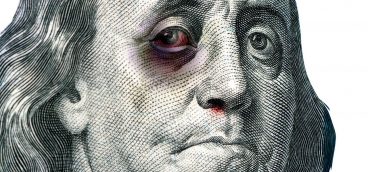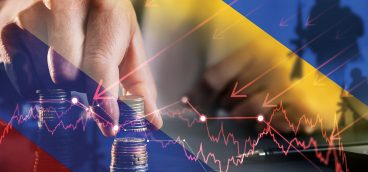Wall of Worry

Editor’s note: Pittsburgh Quarterly asked regional financial experts to respond in 200 words or fewer to this question: What are your expectations for inflation, interest rates and U.S. equities (stocks) this year, and how are you advising clients during this continuing market volatility and uncertainty? (Responses were submitted by late April.)
Previously in this series: Wall of Worry, Pt II

WIN SMATHERS, SHOREBRIDGE WEALTH MANAGEMENT
Inflation has clearly moderated from the 40-year high levels reached last summer. We expect inflation to continue cooling this year as growth in the economy slows due to restrictive monetary policy and tighter lending conditions resulting from the recent bank tremors. Interest rates on the short end of the Treasury yield curve are nearing peak levels for this cycle, while long-term rates have begun adjusting lower in expectation of a shallow recession. Stocks have rallied to start the year in anticipation of a potential pause in rate hikes by the Fed this summer and are discounting potential rate cuts later in the year to counter deteriorating economic conditions. We are unconvinced the Fed will be accommodative so quickly, removing a potential catalyst to fuel further upside in stock returns this year. We are long-term-focused investors who are advising clients to remain patient, disciplined and committed to their asset allocations, despite the uncertainty, as we seek to take advantage of last year’s bond and stock market declines. Above all else, we know that time in the market, rather than timing, is key to achieving long-term success.
TIM RICE, SMITHFIELD TRUST COMPANY
In our opinion, the long-term outlook for the U.S. economy and financial markets is much stronger than many may believe, despite the prevailing negative sentiment. While inflation has averaged below 2 percent over the past decade, we believe it is important to remember that since 1960, inflation has risen an average of 3.8 percent per year. We expect the effects of the current tightening of monetary policy to lead inflation lower, settling at a level of 3-4 percent by the end of 2023. Our belief is that the Federal Reserve will raise short-term rates just one more time, reaching a terminal target rate of 5 percent. Despite higher interest rates and a tighter lending environment, we maintain a positive outlook for the overall stock market and anticipate the S&P 500 to increase by 10 percent in 2023. While there may be volatility in the near-term months, we continue to advise our customers on the importance of aggressively taking advantage of market opportunities. Financial markets are known to experience periods of both exuberance and panic, and it is our opinion that capitalizing on these moments is essential to achieving outperformance.


GREG CURTIS, GREYCOURT
My personal expectation is for a recession this year, albeit a mild one, driven by challenged corporate profits and a weakening labor market. Inflation will likely remain more persistent than markets are anticipating, as the Fed is forced to keep interest rates higher for longer. Having initially underestimated inflation (believing it to be “transitory”), the Fed allowed it to become deeply embedded in the economy. As a result, the Fed has had to raise rates faster than at any time in its history, causing stress in the banking industry, a weakening of credit conditions, and yet-to-come disruptions in other parts of the economy. This combination of a flat or contracting economy (a “stagnant” economy) and persistent inflation is the very definition of stagflation, one of the worst economic environments for equity securities. I therefore see multiples declining and weak stock markets continuing until we begin to pull out of the recession, probably later this year.
SHIV SETHI, THE IRICK GROUP, MERRILL PRIVATE WEALTH MANAGEMENT
We believe that especially in times of market volatility, it’s important to have clear goals with a detailed and stress tested financial plan. Along with our chief investment office, we believe that 2023 will be a transitional year, and our portfolios are built for the long term. We meet regularly with our clients and continue to emphasize higher-quality investments across asset classes. As uncertainty fades, potentially toward the end of the year, we anticipate a new, long-term bull market to emerge, as corporate earnings growth turns positive and risk assets are priced more attractively. Our CIO believes that the recent declines in two-year yields indicate that monetary policy may ease soon, due largely in part to ongoing specific stresses in the financial system. While the Fed’s rate hiking cycle may be nearing an end, we are acutely aware of the lag effect in monetary policy and believe the entirety of this tightening has yet to be felt. Combined with a potential credit contraction, we see inflation continuing to decline to near the Fed target in 2024. In an ever-changing economic and investment landscape, working with a trusted advisor can help maintain discipline and a long-term view.


MATTHEW GEORGE, PNC FINANCIAL SERVICES
In times of heightened market uncertainty, a strong partnership with your advisor team is critical. PNC recognizes that each of our clients has unique needs, circumstances, risk appetites and goals — all of which help inform how we approach the development of a customized wealth strategy. We advise clients to be well-diversified across asset classes, and to think about adding tools that can help hedge against market disruptions. But ultimately, it’s important to remember to stay calm. No one knows for sure what the future holds, but we do know that markets, inflation and interest rates fluctuate. While that can be disconcerting when looked at in the short term, we advise clients to not lose sight of long-term goals. Historically, there have been tremendous gains made during periods of recovery, so it is critical to stick to your plan. The last thing you would want to do is miss out on attaining long-term goals because of short-term reactions.
DAVID BUCKISO, FIRST COMMONWEALTH BANK
Our expectations for inflation are mixed. We believe that it has peaked at the June 2022 reading of +9.1 percent, year-over-year, versus the more recent +6.0 percent reading in February 2023. The Fed’s rate-hiking process does tend to work over time, as higher rates increase borrowing costs, which lead to people spending less, etc. We believe there are inflationary pressures that may not necessarily respond to higher rates as normally expected. We believe inflation will continue to moderate, but at a slower pace than the Fed, or anyone else would like. We don’t believe moderation will be a straight line. If we are right about inflation being stubborn, then it is likely the Fed keeps rates higher for longer, as they have said often. We see a potential pause in the next meeting or two. We continually preach the resiliency of our financial markets. Longer-term investors have always benefited in staying the course and taking advantage of opportunities (lower prices and asset allocation opportunities) as they present themselves. In the short term, we expect continued volatility, as many forces (higher interest rates, higher inflation, economic slowdown, higher unemployment, tighter credit, geopolitical concerns) flow through the headlines at the same time.













